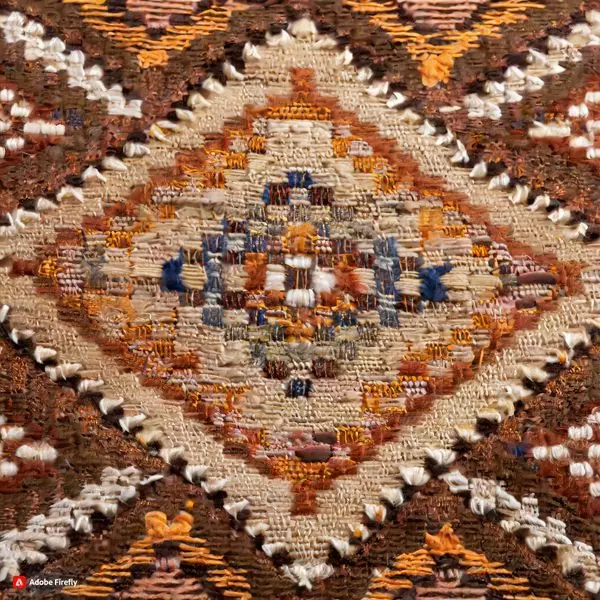In the realm of India’s rich cultural heritage, the art of carpet weaving stands as a testament to the intricate craftsmanship that has been preserved through centuries. Hailing from the medieval era, this age-old tradition, influenced by the expertise of Persia, China, and Afghanistan, has found its thriving epicentre in various states across the country.
Mirzapur and Bhadohi in Uttar Pradesh have emerged as the pulsating hubs of this ancient craft, drawing attention not only from within the nation but also from global admirers of fine handcrafted furnishings and artworks. Upholding the essence of tradition and human touch, the hand-knotted rugs continue to weave stories of cultural significance and artistic brilliance.
Mirzapur’s Carpet Weaving Legacy: A Journey through Centuries
The roots of carpet weaving in the city of Mirzapur can be traced back to ancient times, with its prominence gaining traction during the late 19th century. Historically, the aftermath of the Indian Mutiny in 1857 led to the migration of skilled carpet weavers to the serene enclave of Mirzapur. The village of Madhosingh, nestled between Bhadohi and Mirzapur, became a sanctuary for these artisans, marking the genesis of a flourishing carpet industry in the region.
Witnessing the economic potential of this craft, notable figures like Mr Brownford facilitated the establishment of carpet-making companies, amplifying Mirzapur’s standing as a weaving center. The introduction of innovative designs and techniques, coupled with the inherited skills of generations, further embellished the distinct charm of Mirzapur’s carpets, echoing a rich cultural tapestry that transcends time.
Bhadohi’s Artistry and Craftsmanship: A Testament to Tradition
Nestled along the banks of the revered Ganges River, the district of Bhadohi proudly upholds its title as the oldest carpet-weaving hub in India. Preserving its unique craft since the 16th century, the skilled artisans continue to pass down their legacy from one generation to another. Their dedication is evident in every meticulously hand-knotted carpet, where each artisan meticulously ties between six to nine thousand knots per day, weaving narratives of solidarity, familial bonds, and cultural heritage.
The hallmark of Bhadohi’s craftsmanship lies in the exquisite quality of its handcrafted rugs, with each boasting up to 425 knots per square inch, ensuring premium quality and durability. Employing materials such as soft blended wool, premium silk, or a combination of both, Bhadohi’s artisans create masterpieces that are not merely floor coverings but intricately woven works of art.
Diverse Weaving Techniques: A Tapestry of Artistry
Uttar Pradesh’s craft landscape encompasses a diverse array of weaving techniques, each contributing to the rich cultural mosaic of India. From the ancient art form of hand-knotted rugs that showcase intricate designs and natural materials to the blending of tradition and modernity in hand-tufted rugs, every creation reflects a blend of artistry and history.
Flat weaves, resonating with the essence of textile weaving, and handwoven rugs and carpets, capturing the precision and attention to detail of skilled artisans, are testaments to the rich legacy of Indian carpet making. Bridging the past and the present, these timeless artworks continue to captivate art connoisseurs and homeowners alike, cementing their position as cultural treasures that endure the test of time.
In an era inundated with technology and automation, the persistence of handcrafted carpets from Uttar Pradesh serves as a poignant reminder of the enduring power of human artistry and tradition, speaking volumes about the profound beauty of the craft that transcends time and generations.
Also Read: The Global Agenda: Advancing Sexual & Reproductive Health At World Health Summit 2023












